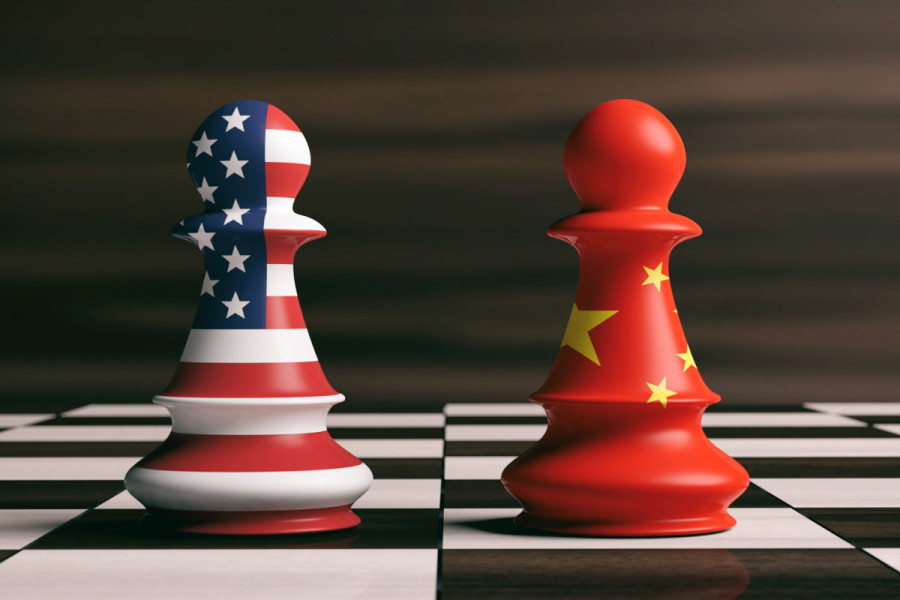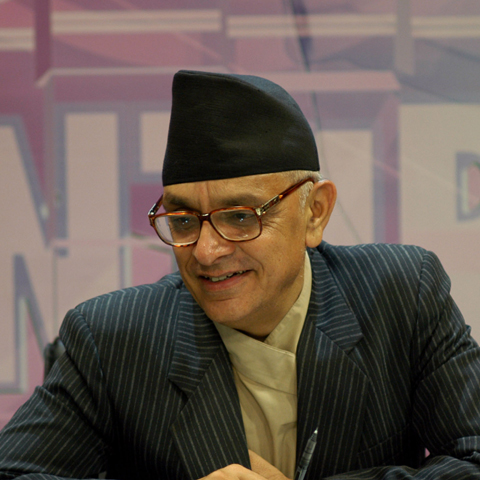Columns
The US-China tango
The unipolarity in world politics has started to unravel, and the distribution of hard and soft power is in a state of flux.
Prakash Chandra Lohani
In the early 1970s, then United States President Nixon and his national security adviser Kissinger startled the world by decisively moving towards normalising relations with China. It was a bold and strategic shift for two reasons. First, it was partly a recognition that the international system could not function without the participation of over a billion people in the mainstream of international politics. Second, the new move was also a well-thought-out plan to use China to constrain the then Soviet Union and expand the policy options for the US in the international arena. For the Chinese, it was a desirable option since it meant recognition of the communist regime from its powerful adversary, and also the possibility of much-needed support to meet the Soviet military challenge on the border. It was viewed as a win-win situation by both countries
The new show
China was a poor developing country when the new tango with the US started. Under Deng Xiaoping’s visionary leadership, China was successful beyond imagination in attracting capital and technology from the Western world. Labour in China was cheap and disciplined. From the centre to the county level, the government focused on increasing investments and improving technology in production, primarily for exports. American capitalism had found a fertile arena for production and profit. From the perspective of the US government, it was both good politics and economics. Cheap Chinese imports of consumer goods helped moderate inflation; China’s new enthusiasm for capitalism and a market economy was seen as a move towards a democratic system.
The vision was of a new China that would emerge as a strong pillar of world order under the leadership of the US. It was a grand vision that gave the world the notion of a new international order firmly anchored on liberal democracy. In line with this thinking, China was welcomed as a new member of the World Trade Organisation with promises of expanding trade and investments and increasing cooperation in science and technology. China’s disciplined and hard-working labour force and the support of Western capital plus technology proved to be the new synergy needed for rapid economic growth. The miracle was there for all to see. China was a developing country with a per capita income of around $200 in late 1970; 50 years later, its per-capita income was slightly over $10,000, and its economy was the second largest after the US.
China’s rise as a great power has been spectacular. However, an increasingly assertive China is not following the script the Western world imagined when Deng in 1978 declared his new brand of economic liberalism that put the economy above everything else. Deng’s famous dictum that it is better to hide one’s strength until you are ready was the central theme during the years of economic transformation. Apparently, under the leadership of President Xi Jinping, this strategy is being reviewed. There are clear indications that China no longer feels the need to hide its strength to assert what it considers its vital national interests. Writing about the Chinese attitude, Kissinger once described the Chinese conception of international order as “a world in which China could find security and progress through a kind of combative coexistence in which readiness to fight was given equal pride of place to the concept of coexistence”. (Kissinger, On China p 235.) In Kissinger’s words, the Chinese perception of geopolitics is characterised not by a static equilibrium but by “the art of understanding matters in flux”.
The long cycles
Indeed, world politics has been in a continuous flux of long cycles of over 200 years or more since the last 700 years. Capitalism got a significant boost in the 16th century when the innovative Dutch seemed to lead the world. The Dutch literally invented the world’s first stock market, introduced new innovations in the banking system, and promoted the idea of owning equity in business enterprises. The Dutch East India Company was their flagship enterprise to show their economic power and their willingness to exploit other nations in Asia and Africa. The Dutch guilder was the currency most sought after, like the American dollar in our time. But Dutch supremacy did not last long; the many wars with Sweden and France and the gradual rise of Britain as a new economic and military power ended the Dutch era and eventually led to the dissolution of the Dutch East India Company in 1799. Now it was the age of the British East India Company, with the might of the British navy providing a powerful platform for imposing colonialism and economic exploitation on a global scale. During the heyday of colonialism, it was a matter of British pride to declare that the “sun never sets in the British Empire”. Naturally, the British pound was the most sought-after reserve currency.
After the Second World War and the Allied victory over the Nazis, the British lost their status as the preeminent global economic and military power. Almost by default, the US was now the unchallenged economic and military superpower and the leader of the Western alliance determined to contain the communist system. The high point of this struggle was the dissolution of the Soviet Union and the bold declaration by eminent scholars in the US that the world had now entered an era characterised by “the end of ideology”. We seemed to be entering a uni-polar period marked by only one ideology, one superpower, and one currency—the US dollar—as the reserve currency.
The unipolarity in world politics has started to unravel, and the distribution of hard and soft power is in a state of flux. Broadly there are three kinds of powers in the international system today. They could be categorised as (a) The established, (b) The returning, and (c)The emerging. Countries that dominated the 20th century could be viewed as established powers. China, the new claimant to the superpower status views itself—in Kissinger’s analysis—as the “returning” power that had lost its preeminence during its “century of humiliation”. As a returning power, some analysts assume that China is trying to claim its vision of a new “Middle Kingdom” syndrome of a bygone era. Then there are the emerging nations with varying potentials eager to participate and make their presence felt in the international system. In this group, India is the new wannabe superpower waiting for its time.
Naturally, the future will likely be bumpy and complicated in this new crowd of clashing national interests and ambitions searching for changes in international institutional arrangements for power, security, survival and prosperity. When Kissinger went for a change in strategy and opted for an equilibrium triangle model at the height of the Cold War in dealings with China and the then Soviet Union, he could not have possibly visualised the present scenario. Taking inspiration from the cyclical rise and fall of great powers in history, it now seems natural to think that cyclical trends will favour China. However, this thesis will be contested, and the emerging efforts to build new alliances or balance between the US and other great and small powers indicate the forthcoming picture. The future challenge is defining the new rules of international relations, considering the invisible red lines between China and the US. This will be a torturous process since there is a need to work out mutually acceptable and beneficial rules of engagement and constraints that consider the changing power distribution and the hope and ambition of various countries. This is difficult and could lead to multiple levels of conflict in different parts of the world. As Francis Bacon noted long ago, “the privilege of absurdity” is available only to humans. We have to ensure we do not become victims of this privilege.




 9.12°C Kathmandu
9.12°C Kathmandu













%20(1).jpg&w=300&height=200)

